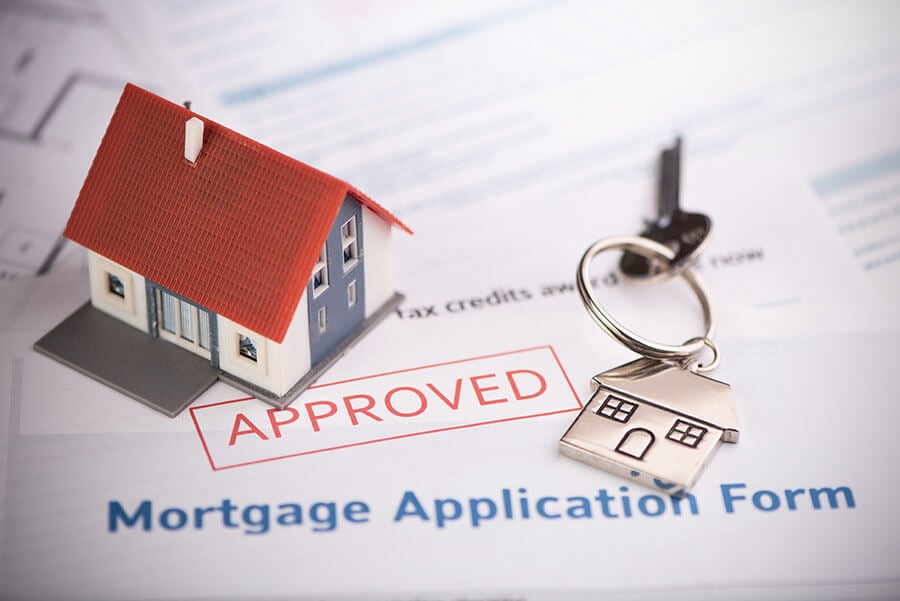Conventional Mortgage Loans: The Preferred Selection for Homebuyers
Conventional Mortgage Loans: The Preferred Selection for Homebuyers
Blog Article
The Crucial Elements to Consider When Deciding On In Between Fixed-Rate and Adjustable-Rate Mortgage Lendings
When reviewing home mortgage choices, customers deal with a pivotal choice in between adjustable-rate and fixed-rate fundings, each providing unique benefits and possible risks. Trick considerations such as passion price security, predictability in monthly settlements, and the effects of prospective rate modifications can considerably influence long-term monetary wellness.
Rates Of Interest Security
When picking a mortgage, comprehending rate of interest security is vital for educated decision-making. Rates of interest can significantly impact the overall expense of a home loan, and recognizing the nature of these rates is crucial for consumers. Fixed-rate mortgages offer the benefit of consistent regular monthly settlements over the life of the car loan, protecting customers from market changes. This stability makes it possible for home owners to prepare their funds with higher certainty, as they will not be impacted by increasing rate of interest.
On the other hand, variable-rate mortgages (ARMs) begin with reduced initial rates that might alter regularly based upon market problems. While this can lead to lower repayments initially, it likewise introduces unpredictability, as consumers might face enhanced payments if rate of interest increase. For those considering an ARM, it is crucial to examine the possibility of rate modifications, the potential for repayment rises, and the length of the preliminary fixed-rate period.
Eventually, the choice in between fixed-rate and adjustable-rate mortgages rests on specific danger tolerance and monetary situations. Recognizing interest price security helps borrowers make informed decisions that straighten with their long-term financial objectives.
Regular Monthly Repayment Predictability
While borrowers typically prioritize rate of interest security, the predictability of monthly repayments is just as vital in the mortgage choice procedure (Conventional mortgage loans). Monthly repayment predictability plays a vital role in budgeting and monetary preparation, as it straight impacts a homeowner's capital and general monetary wellness
Fixed-rate mortgages offer a regular regular monthly repayment throughout the life of the lending, enabling customers to expect and intend their expenditures successfully. This stability can be specifically helpful for first-time property buyers or those on a fixed earnings, as it gets rid of the unpredictability linked with changing payments.
On the other hand, adjustable-rate mortgages (ARMs) commonly feature reduced preliminary settlements that can change gradually, causing potential irregularity in month-to-month commitments. While originally enticing, this unpredictability can make complex economic preparation, especially if debtors do not make up future rate modifications.
Possible Price Adjustments
In the realm of variable-rate mortgages (ARMs), possible price changes represent a considerable variable that consumers must thoroughly take into consideration. Unlike fixed-rate mortgages, where the rate of interest price remains the same for the life of the car loan, ARMs are identified by varying passion prices that are tied to market indices. This variability can cause significant changes in regular monthly settlements, impacting the customer's monetary preparation and budgeting.
Generally, ARMs have a first fixed-rate duration during which the rates of interest is secure. After this duration, nonetheless, the price adjusts at fixed periods-- commonly yearly. Borrowers must recognize the margin and index utilized to compute these changes, as they directly influence future passion rates. Furthermore, ARMs typically consist of caps that limit just how a lot the rate of interest can raise at each modification and over the life of the loan, which can give some degree of defense against extreme price walks.
Recognizing these possible modifications is critical for debtors, as they straight affect long-lasting repayment commitments. Evaluating individual monetary circumstances and take the chance of tolerance is essential when choosing whether an ARM straightens with one's economic objectives.
Funding Term Considerations
Finance term considerations play a pivotal function in the decision-making process for consumers choosing between adjustable-rate and fixed-rate home loans. The length of the finance term substantially affects monthly repayments, passion rates, and total monetary planning. Fixed-rate home go to my site mortgages typically use terms of 15 to thirty years, offering security in regular monthly settlements and predictability in budgeting. This can be specifically appealing for borrowers that intend to stay in the very same home lasting and like the assurance of fixed repayments throughout the life of the financing.

Inevitably, customers have to evaluate their individual situations, economic goals, and market conditions when considering the effects of financing term choices within each home loan type.

Total Cost of Borrowing
The overall price of loaning is a vital factor that can dramatically affect a debtor's option in between fixed-rate and adjustable-rate mortgages. Fixed-rate home loans use predictable month-to-month repayments, as the rate of interest stays consistent throughout the lending term. This predictability can cause reduced overall costs, specifically in a steady or decreasing rate of interest rate setting. Consumers can spending plan effectively, knowing their payments will not vary.
Alternatively, variable-rate mortgages (ARMs) commonly begin with lower preliminary rates, causing reduced in advance expenses. These prices can enhance after a first period, leading to possibly higher long-lasting costs. Consumers should consider the regularity and degree of price modifications, in addition to the total financing period, to properly examine the monetary effects.
Moreover, the overall price of borrowing encompasses not only rate of interest yet likewise charges and various other associated expenses, such as shutting expenses and insurance policy (Conventional mortgage loans). When examining mortgage alternatives, debtors should perform an extensive cost evaluation over the life of the finance. By doing so, they can make an educated choice that lines up with their financial objectives and run the risk of tolerance
Verdict
To conclude, choosing between adjustable-rate and fixed-rate mortgage necessitates careful factor to consider of several essential elements. Rate of interest security and regular monthly settlement predictability are vital for effective budgeting, while the possibility for price modifications in ARMs presents financial uncertainty. In addition, the expected period of homeownership and the overall expense of loaning, including rates of interest and linked fees, should straighten with specific financial conditions and run the risk of tolerance. Such a comprehensive evaluation will promote informed decision-making in home loan selection.
Secret considerations such as passion rate stability, predictability in regular monthly repayments, and the click this ramifications of prospective rate adjustments can substantially affect long-lasting monetary health. Interest rates can significantly impact the overall price of a home mortgage, and acknowledging the nature of these rates is necessary for debtors. Unlike fixed-rate home mortgages, where the rate of interest price stays unchanged for the life of the finance, ARMs are identified by rising and fall rate try here of interest rates that are tied to market indices. Additionally, ARMs frequently include caps that restrict just how much the interest rate can enhance at each adjustment and over the life of the financing, which can supply some level of protection versus radical rate hikes.
Passion price security and regular monthly payment predictability are paramount for reliable budgeting, while the capacity for rate adjustments in ARMs introduces financial unpredictability.
Report this page